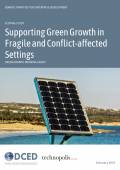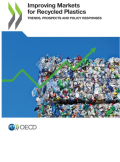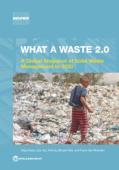
E-waste is now the fastest-growing waste stream in the world, and society only deals with 20% of e-waste appropriately, yet e-waste is worth at least $62.5 billion annually. This paper discusses the state of play regarding global e-waste handling and production, and the potential benefits of the proper treatment of e-waste, including resource recovery from urban mining, reverse logistics and advanced recycling and recapturing.

This scoping paper explores how inclusive and green growth can be supported in fragile and conflict-affected settings (FCAS), and if there are certain approaches and instruments to support green growth, which are more or less adapted for such settings. It includes case studies on waste management in Sierra Leone, the the “Post Conflict Window” of the African Enterprise Challenge Fund (AECF), and the Deutsche Gesellschaft für Internationale Zusammenarbeit GmbH /German Corporation for International Cooperation (GIZ) & IDH Sustainable Trade Initiative: Regional Landscape Approach in Côte d’Ivoire.

Plastics have become one of the most prolific materials on the planet: in 2015 we produced about 380 million tonnes of plastics globally, up from 2 million tonnes in the 1950s. Yet today only 15% of this plastic waste is collected and recycled into secondary plastics globally each year. This report looks at why this is the case and what we can do about it, as the pervasiveness of plastics is becoming an urgent public health and planetary problem.

This report provides investment potential estimates across six key sectors (waste, renewable energy, public transportation, water, electric vehicles, and green buildings). Sector-specific investment potentials are estimated at the global and regional levels. The report also addresses urban resilience, financing solutions, and includes six deep dives into specific cities – one from each region – representing various sizes and stages of development:

This report, What a Waste 2.0: A global snapshot of solid waste management to 2050 , aggregates extensive solid waste data at the national and urban levels, estimates and projects waste generation to 2030 and 2050. Beyond the core data metrics from waste generation to disposal, the report provides information on waste management costs, revenues, and tariffs; special wastes; regulations; public communication; administrative and operational models; and the informal sector.
